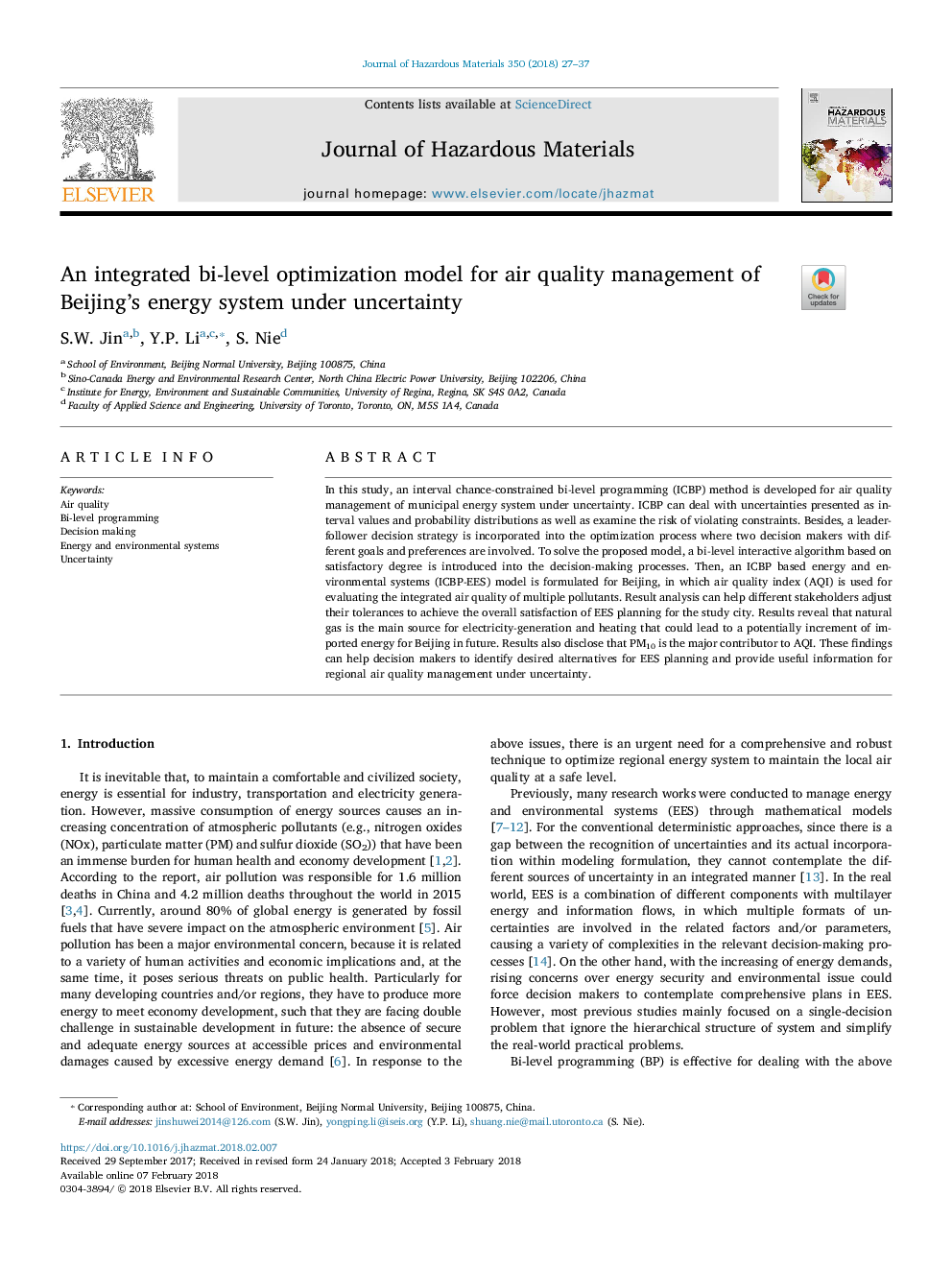ترجمه فارسی عنوان مقاله
یک مدل بهینه سازی دو جانبه برای مدیریت کیفیت هوا در سیستم پکن و یک سیستم انرژی در زیر عدم اطمینان
عنوان انگلیسی
An integrated bi-level optimization model for air quality management of Beijingâs energy system under uncertainty
| کد مقاله | سال انتشار | تعداد صفحات مقاله انگلیسی |
|---|---|---|
| 88478 | 2018 | 11 صفحه PDF |
منبع

Publisher : Elsevier - Science Direct (الزویر - ساینس دایرکت)
Journal : Journal of Hazardous Materials, Volume 350, 15 May 2018, Pages 27-37
ترجمه کلمات کلیدی
کیفیت هوا، برنامه نویسی سطحی، تصمیم سازی، سیستم های انرژی و محیط زیست، عدم قطعیت،
کلمات کلیدی انگلیسی
Air quality; Bi-level programming; Decision making; Energy and environmental systems; Uncertainty;

